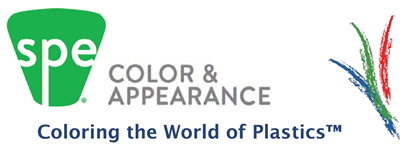Using Resins as a Reflective Medium for Interference Effect Pigments
Breeze Briggs
BASF Colors and Effects
There are many factors that can influence the visual impact that effect pigments demonstrate. Depending upon the structure of the effect pigment (mica plus additional layers of TiO2) the reflection and transmission of light creates either a white pearlescent or a colored pigment. These colored pigments, also called interference effect pigments, generate various colors depending upon the type of material used and the thickness of the layers on the mica.
When white light hits the effect pigment, the light is split into wavelengths that are reflected and transmitted. The behavior of the light being reflected is described by the refractive index of that material. The refractive index is a measurement of the velocity of the light as it passes through different mediums. The layered structure of an interference pigment leads to differing refractive indexes giving way to a colored effect pigment. Although the pigment has an inherent refractive index the material or medium that the pigment is in, also has a refractive index that can change the appearances of the effect pigment. In this paper the influence of the polymer resin is investigated as the reflective medium for interference pigments.
Biography- Breeze Briggs
Bre eze earned her bachelor’s degree in Chemistry and Chemistry Education from Montana State University followed by a stint teaching in New Zealand at an all-girls preparatory school. She then continued on to earn her PhD. from Purdue University in Inorganic Chemistry in 2010 focusing on the synthesis and binding of large molecules to DNA and RNA. After earning her PhD she joined BASF through a Professional Development rotational program giving her experience in product stewardship and pharmaceutical research. She then spent two years doing New Business Development in Animal Nutrition before coming back to her first love of the chemistry of colors. Breeze joined the Inks, Plastics, Transportation & Industrial Coatings division at BASF in 2014 where she is currently technical specialist for pigments for plastics.
eze earned her bachelor’s degree in Chemistry and Chemistry Education from Montana State University followed by a stint teaching in New Zealand at an all-girls preparatory school. She then continued on to earn her PhD. from Purdue University in Inorganic Chemistry in 2010 focusing on the synthesis and binding of large molecules to DNA and RNA. After earning her PhD she joined BASF through a Professional Development rotational program giving her experience in product stewardship and pharmaceutical research. She then spent two years doing New Business Development in Animal Nutrition before coming back to her first love of the chemistry of colors. Breeze joined the Inks, Plastics, Transportation & Industrial Coatings division at BASF in 2014 where she is currently technical specialist for pigments for plastics.
